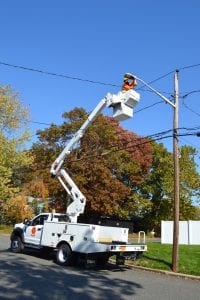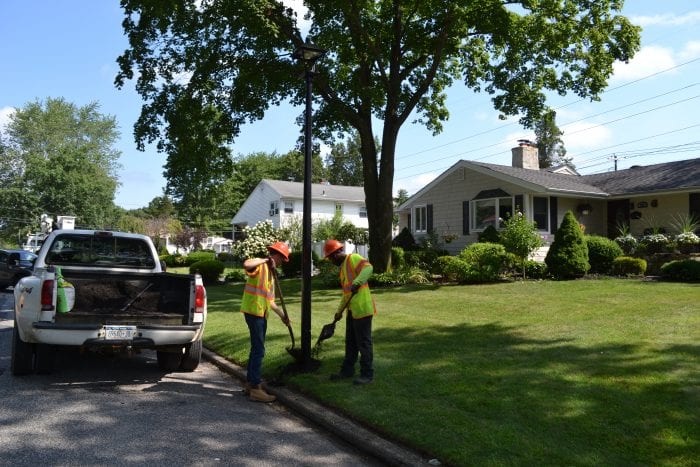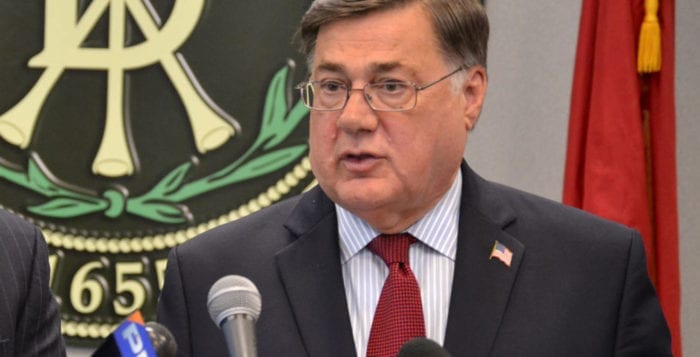It’s helping the environment, but saving a whole lot of money, too.
The Town of Brookhaven Highway Department recently completed phase I of its energy-efficient street light conversion program — a program replacing all low-pressure sodium and high-pressure sodium overhead lights with light-emitting diode (known as LED) streetlights.
Brookhaven Highway Superintendent Dan Losquadro (R) said he began researching for this project as soon as he joined the Highway Department in 2013. With the size of the town being equivalent to all of Nassau County, he said that his department is responsible for 44,000 streetlights. With the support of Supervisor Ed Romaine (R) and the Town Board, the project was approved.
“The goal that I had in those first years was to go after the highest energy-consuming fixtures that we had,” Losquadro said.

During phase I, the department tackled streetlights that are mounted on utility poles known as “cobra heads,” which tend to use the most wattage, and most of those overhead lights have been finalized, after three short years of work. Phase II is now in effect, moving to convert all existing neighborhood post top fixtures to LED lighting, and replacing old fiberglass poles with new aluminum poles to be completed by 2023.
“There are a multitude of factors that play in as to why we wanted to do LED,” the highway superintendent said, noting the energy savings, cost savings and maintenance cost that LED lighting can have. “Not only are you saving that money every year on energy, but instead of having a bulb that’s going to last you two-to-three years, you’re buying a fixture that has a 10-year warranty, with an anticipated life expectancy of up to 20 years — so your maintenance costs go down tremendously.”
Losquadro added that LED lighting is safer and will prevent light pollution compared to other bulbs.
“I’m a firm believer to do something once and do it right,” he said. “This is about the future of Brookhaven Town, and doing things that are going to pay long term with benefits to everyone, myself included as a resident.”
The total project cost was $11.25 million, however, $4.5 million was paid for with part of the $20 million Municipal Consolidation and Efficiency Competition grant the town was awarded. The remaining $6.75 million was paid for with town funds.
In 2020, alone, the town has saved $930,000 in energy costs.
Losquadro said, from a taxpayer perspective, the town has already saved $1.5 million. By just using raw numbers, they can expect to pay off the project in less than five years.
“To convert the entire town, it’s a big endeavor,” he added. “You make the upfront investment, but you know you’re going to get a payoff in short.”
He said that “even with a 10-year warranty, you’re paying it off before the things are even out of warranty. And with an anticipated life expectancy of 20-years plus, it’s a tremendous, tremendous savings.”








